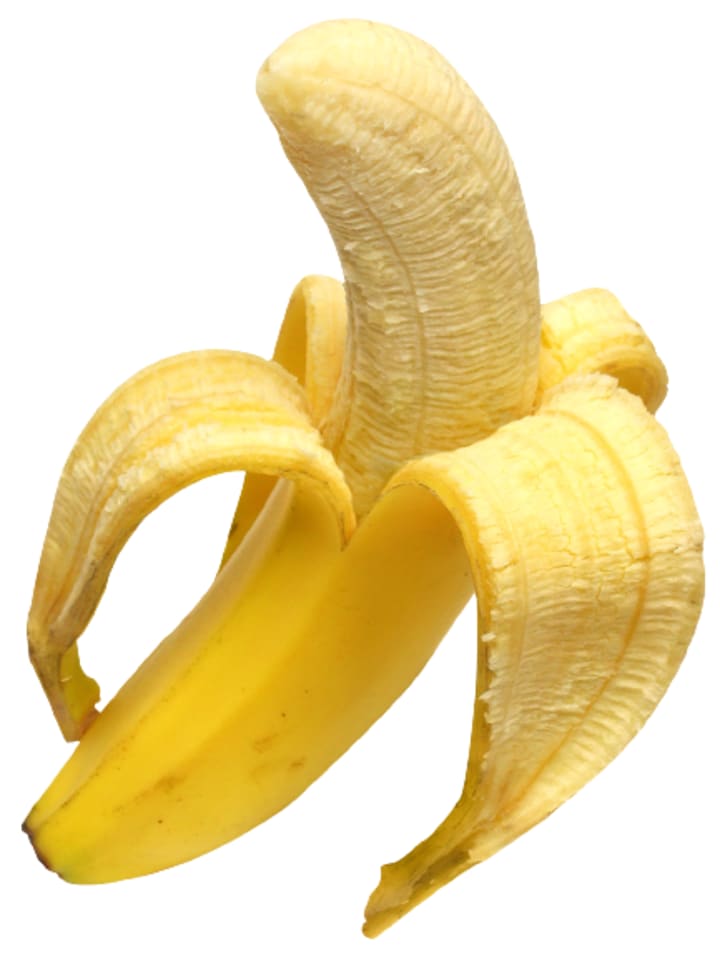Bananas
The tropics are where bananas are grown, and while they are primarily consumed there, they are prized for their flavour, nutritional content, and year-round availability.

One of the most significant fruit crops in the world is the banana, a fruit belonging to the genus Musa and family Musaceae. Cavendish, or dessert, bananas are often consumed fresh, however they can also be fried or mashed and chilled in pies or puddings.
They may also be used to flavour breads, cakes, or muffins. In addition to having a high amount of dietary fibre, potassium, manganese, and vitamins B6 and C, ripe fruit has up to 22% of its weight in carbohydrates. Plantains used for cooking are commonly grown as a staple food source in tropical areas and are starchy rather than sweet. They are prepared while ripe or young.
Background
Early Greek, Latin, and Arab sources describe the consumption of bananas, which are assumed to have been domesticated in Southeast Asia. Alexander the Great encountered bananas while on a trip to India. Bananas were brought from the Canary Islands to the New World not long after America was discovered. Hispaniola was where they first took root, but they quickly spread to neighbouring islands and the continent.
Bananas were first cultivated in the 16th century, but it wasn't until the 19th century that they started showing up in American marketplaces. By then, they had become a staple meal in many areas. The majority of bananas grown worldwide are plantain types, even though Cavendish bananas are by far the most popular variety imported by nontropical nations.

Vulnerability to Diseases and Cultivating
In semi-arid areas like southern Jamaica, banana plants are successfully grown with irrigation. Banana plants thrive naturally in humid tropical conditions on deep, loose, well-drained soils. The rhizome's divisions and suckers are utilised as planting materials; the first crop ripens in 10 to 15 months after planting, and fruit production is then more or less continuous. In a banana plantation, regular pruning is needed to get rid of extra growth and avoid crowding.
The weight ranges from 22 to 65 kg (49 to 143 pounds) and consists of nine hands or more in desirable commercial bunches of bananas. Such bunches, which are taken before they fully ripen on the vine, may produce 300 or more each year on one acre of land. When growing crops for export, the level of maturity that should be reached before harvest depends on the distance from the market and the mode of transportation, and ripening is frequently accelerated artificially after shipment by exposure to ethylene gas.

There is practically little genetic variation in domesticated plants since each banana type is reproduced clonally. Bananas are consequently particularly susceptible to pests and illnesses, as a new pathogen or pest may swiftly wipe out a variety if it were to take advantage of a genetic flaw among the clones. In fact, the Gros Michel dessert variety, which had dominated the global commercial banana sector, experienced this very event in the late 1950s.
The Gros Michel, which was richer and sweeter than the contemporary Cavendish, was destroyed by an invasive soil fungus that causes Panama disease, a type of Fusarium wilt. Farmers were soon compelled to give up on the Gros Michel in favour of the more hardy Cavendish because they were unable to breed resistance into the sterile clones and could not get rid of the fungus from the soil. The Cavendish is equally susceptible to emerging viruses and pests despite having so far resisted such a pestilent invasion because of its lack of genetic diversity.
Physical Characteristics
The enormous herb known as a banana plant, or rhizome, emerges from the ground to grow into a false trunk that is 3-6 metres (10-20 feet) tall. This tree's trunk is made up of the bottoms of leaf sheaths and is crowned by a rosette of 10 to 20 oblong to elliptic leaves, some of which can grow to be as long as 3-3.5 metres (10-11.5 feet) and as wide as 65 cm (26 inches). At the top of the false stem, a big flower spike that is covered in numerous yellowish flowers and thick purple-red bracts appears.
The flower spike bends downward to form bunches of 50 to 150 individual fruits, or fingers. The individual fruits, or hands of bananas, are arranged in clusters of ten to twenty. A plant is chopped down to the ground once it has produced fruit because each trunk only yields one bunch of fruit. Suckers or shoots that emerge from the rhizome at intervals of around six months eventually replace the dead trunk. As a result, a single rhizome can live for many years. The weaker suckers that the rhizome transmits through the soil are periodically clipped, while the stronger suckers are allowed to develop into fruit-producing plants.

Naming Convention
The taxonomy of bananas has been a point of contention despite the fact that there are hundreds of variations grown today. This is due to the fruit's long domestication, sterility, hybridization, and usage of many common names to identify the same variety. The taxonomy of domesticated bananas has undergone a change as most cultivars are interspecific hybrids of Musa acuminata and M. balbisiana or hybrids of the subspecies of M. acuminata. In contrast to most plants, these varieties are designated by their parent plant's ploidy (number of sets of chromosomes) and not by conventional binomial names.
About the Creator
Fruits And Plants Diary - Get Insight
As a writer, here is the right place to access unique and interesting stories where people always enjoy reading through simple words.






Comments
There are no comments for this story
Be the first to respond and start the conversation.